Due to its easily sculpted and versatile nature, alabaster has been used as a decorative material for thousands of years. Utilised by the ancient Egyptians and designers of the Art Deco period, you may find it in the form of a Pharaoh’s sarcophagus or an early 20th century lamp.
 Above: a selection of alabaster items and sculptures
Above: a selection of alabaster items and sculptures
Whilst many artefacts have survived for centuries, the soft gypsum and calcite composition of alabaster leaves it vulnerable to abrasions and breakages, whilst the bright surface may face discolouration from historic or modern contaminants.
Our ceramics conservator is able to sensitively address these issues in our studio, but there are also steps that can be taken to prevent deterioration. This article will look into the history and use of alabaster, as well as how to care for it at home.
 Above: a detail from an alabaster relief depicting The Dormition of the Virgin by Jacques Juliot, 1540-50
Above: a detail from an alabaster relief depicting The Dormition of the Virgin by Jacques Juliot, 1540-50
What is alabaster?
Alabaster is a soft mineral historically used to sculpt artworks and decorative items. It can be found in two varieties, gypsum and calcite. In terms of chemistry, gypsum is a hydrous sulphate of calcium, whilst calcite is a carbonate of calcium.
The gypsum variety of alabaster is so soft that it can be marked by fingernails. Calcite is slightly stronger but can still be cut by a simple knife.
 Above: a selection of Alabaster antiques from ancient and mediaeval eras
Above: a selection of Alabaster antiques from ancient and mediaeval eras
The alabaster of antiquity is typically the calcite variety and may also be referred to as Egyptian alabaster, onyx-marble and oriental alabaster. Gypsum alabaster is the variety most commonly used in Europe from the mediaeval period onwards. The gypsum alabaster found in English churches may be referred to as Nottingham alabaster.
 Above: alabaster church artworks including a sculpture of the Virgin from 1370-90, a 15th century relief artwork by the School of Nottingham, a statue of Saint James the Greater from 1450-60 and Saint Margaret of Antioch from 1475
Above: alabaster church artworks including a sculpture of the Virgin from 1370-90, a 15th century relief artwork by the School of Nottingham, a statue of Saint James the Greater from 1450-60 and Saint Margaret of Antioch from 1475
Ancient alabaster
In ancient Egypt, alabaster was used for both decorative and functional purposes. Many artefacts we have today come from tombs, including canopic jars and small perfume vessels known as alabastra. Large dishes made of calcite alabaster have also been uncovered, showing clearly the marble-like bands of colour that form in this variety.
 Above: a selection of alabaster antiques from Egypt, including canopic jars, sculptural art and a headrest
Above: a selection of alabaster antiques from Egypt, including canopic jars, sculptural art and a headrest
The famous Assyrian palace reliefs, created in the 9th to 7th centuries BC, were formed from a type of gypsum alabaster known as ‘mosul marble’. Although softer than the calcite used in Egypt, panels have survived intact, perhaps thanks to their warm and dry environment, and can now be viewed at the British Museum.
 Above: a detail from an Assyrian alabaster relief panel, 883-859 BC
Above: a detail from an Assyrian alabaster relief panel, 883-859 BC
Mediaeval alabaster
From the 14th to the 16th century, English sculpture intended for religious buildings was frequently created from gypsum alabaster. The production of alabaster was primarily in the mines around Nottingham – a city well placed to serve the north and south of the country. Alabaster was traditionally used to craft religious statues and sculptural work from wealthy donors, especially tomb artworks – usually a depiction of the sleeping deceased resting upon their memorial.
 Above: examples of 15th century alabaster statuary, including two pieces produced in Nottingham (left, right) and France (centre)
Above: examples of 15th century alabaster statuary, including two pieces produced in Nottingham (left, right) and France (centre)
Due to the soft nature of the material, it may have been worn down over time, leading to loss of detail and discolouration through repeated skin contact from curious hands. Church-dwelling alabaster may have also become discoloured with age, due to exposure to candle and incense smoke and a build up of historic contaminants and dirt – turning the bright surface a dull grey or beige.
 Above: a detail from an alabaster relief that was crafted in Nottingham, 1460
Above: a detail from an alabaster relief that was crafted in Nottingham, 1460
Coloured alabaster
Alabaster was often painted, though this pigment has often become lost or abraded over time. Paintwork has sometimes been diminished by improper cleaning methods, as it is vulnerable to rubbing and chemicals.
 Above: a detail from a mid 16th century sculptural relief of Saint Agnes with a painted surface
Above: a detail from a mid 16th century sculptural relief of Saint Agnes with a painted surface
You may also find that a piece of marble, precious stone or coral antique is actually made from alabaster, as the dye method would mimic different valuable materials. Alabaster was often dyed red to mimic coral, a popular feature in rococo decoration and teething toys for aristocratic children.
Alabaster care
Alabaster can be easily dissolved in water and therefore should avoid contact with liquids. This weakness also means that alabaster sculptures should never be placed outdoors to face the British climate, as prolonged exposure can destroy the structure. Church based alabaster may face dangers from condensation, damp and soluble salts that damage exposed brickwork, allowing them to migrate onto statuary. Moisture contamination will lead to a loss of detail and loss of paint if it is left to develop. We recommend checking the surrounding environment regularly to halt any issues before they worsen.
 Above: detail of an alabaster Roman emperor
Above: detail of an alabaster Roman emperor
Cleaning should only be completed by gently dusting the surface with a soft, dry cloth. Do not use any materials that could scratch or dampen the alabaster and avoid rubbing painted surfaces. If you have an alabaster sculpture at home and in a safe environment, it should not require cleaning very often and may be safer if it is left untouched and safely behind glass to avoid dust build-up. Alabaster may become bruised or scratched easily, so careful handling is also recommended.
 Above: detail from a Nottingham alabaster relief with loss of paint and detail
Above: detail from a Nottingham alabaster relief with loss of paint and detail
Alabaster restoration
Antique or modern alabaster can be safely restored using professional methods, this includes cleaning, consolidation, and repair of breakages.
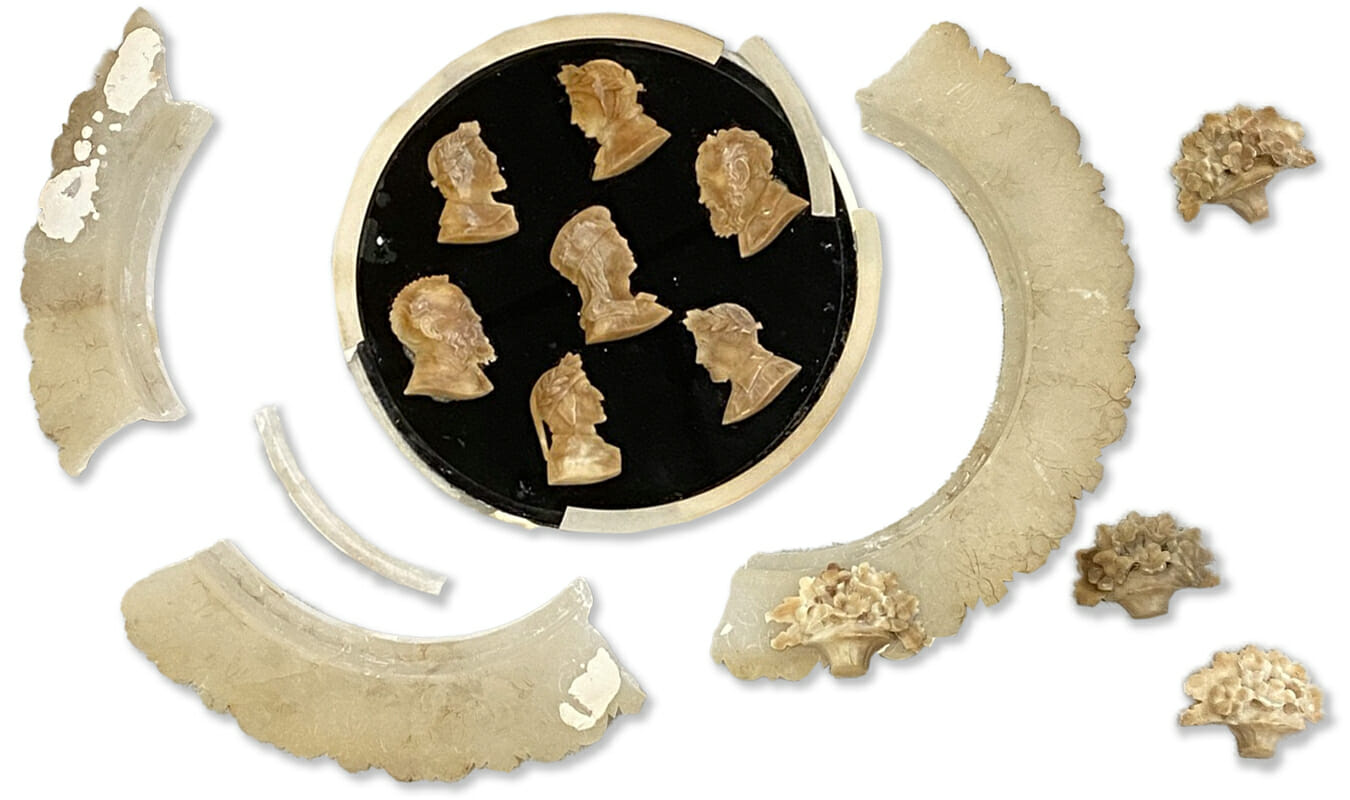
When an alabaster antique has historic deterioration to paintwork or chipped and broken edges that have become part of its aesthetic appeal, our conservator will not attempt to over-restore the piece and will instead protect and preserve the antique appearance. Above and below you can see an example of an alabaster plate that was restored in our studio.

When alabaster becomes broken, we always recommend collecting all of the pieces ready for restoration. Do not attempt to stick or glue the pieces back together at home, as this will cause further damage. Our conservator will always strive to repair a sculpture using all of the original pieces, helping to maintain the historic and artistic integrity of the piece.

How can we help?
If you have an alabaster artwork in need of care or restoration, please speak to our helpful team for further advice and assistance today. Email us via [email protected] or call 0207 112 7576

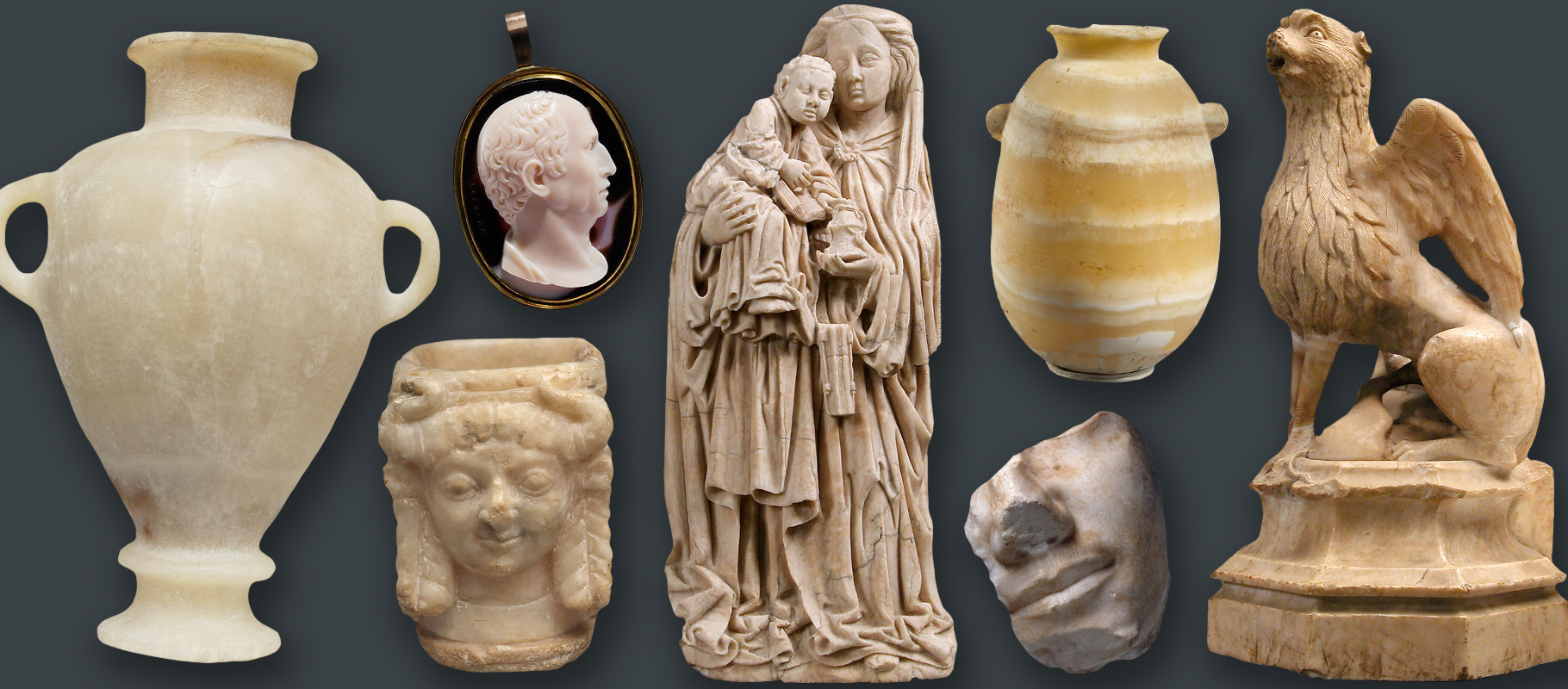 Above: a selection of alabaster items and sculptures
Above: a selection of alabaster items and sculptures Above: a detail from an alabaster relief depicting The Dormition of the Virgin by Jacques Juliot, 1540-50
Above: a detail from an alabaster relief depicting The Dormition of the Virgin by Jacques Juliot, 1540-50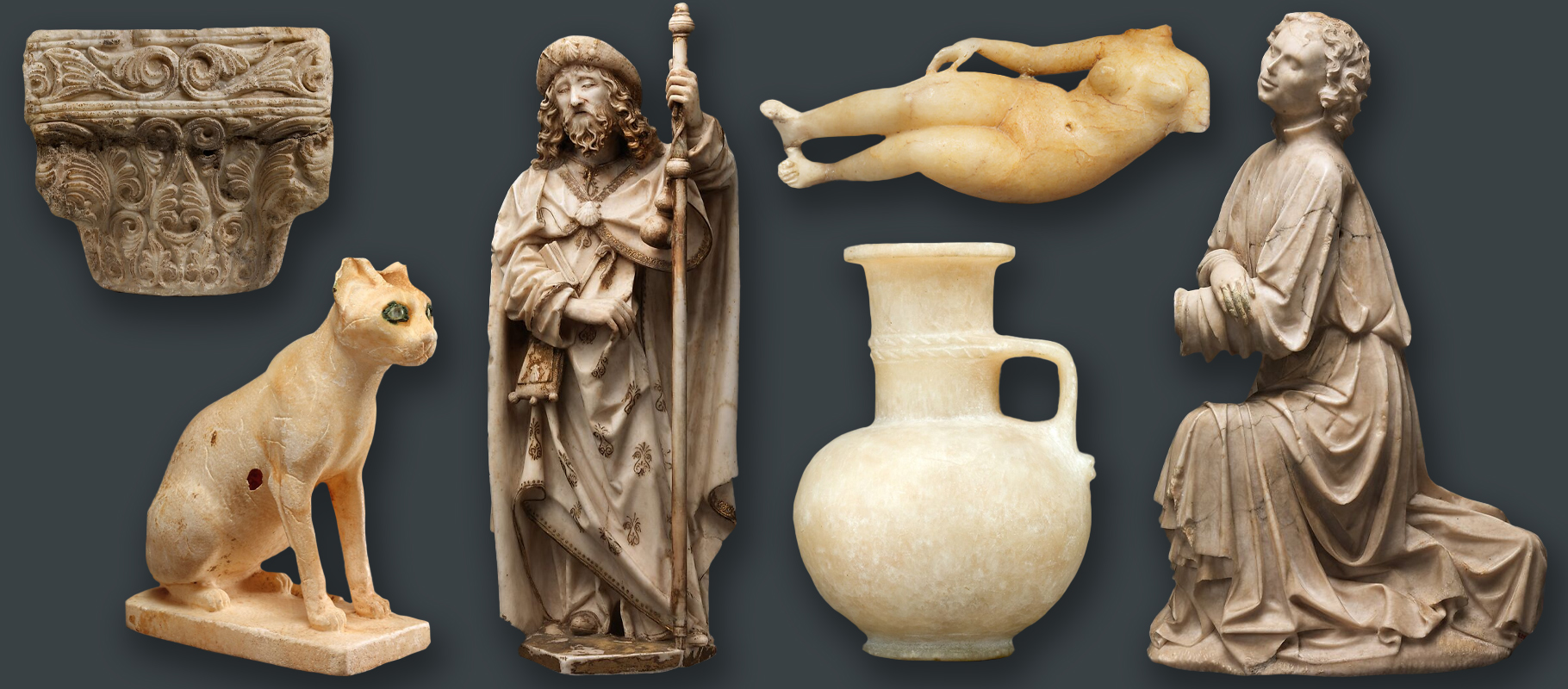 Above: a selection of Alabaster antiques from ancient and mediaeval eras
Above: a selection of Alabaster antiques from ancient and mediaeval eras  Above: alabaster church artworks including a sculpture of the Virgin from 1370-90, a 15th century relief artwork by the School of Nottingham, a statue of Saint James the Greater from 1450-60 and Saint Margaret of Antioch from 1475
Above: alabaster church artworks including a sculpture of the Virgin from 1370-90, a 15th century relief artwork by the School of Nottingham, a statue of Saint James the Greater from 1450-60 and Saint Margaret of Antioch from 1475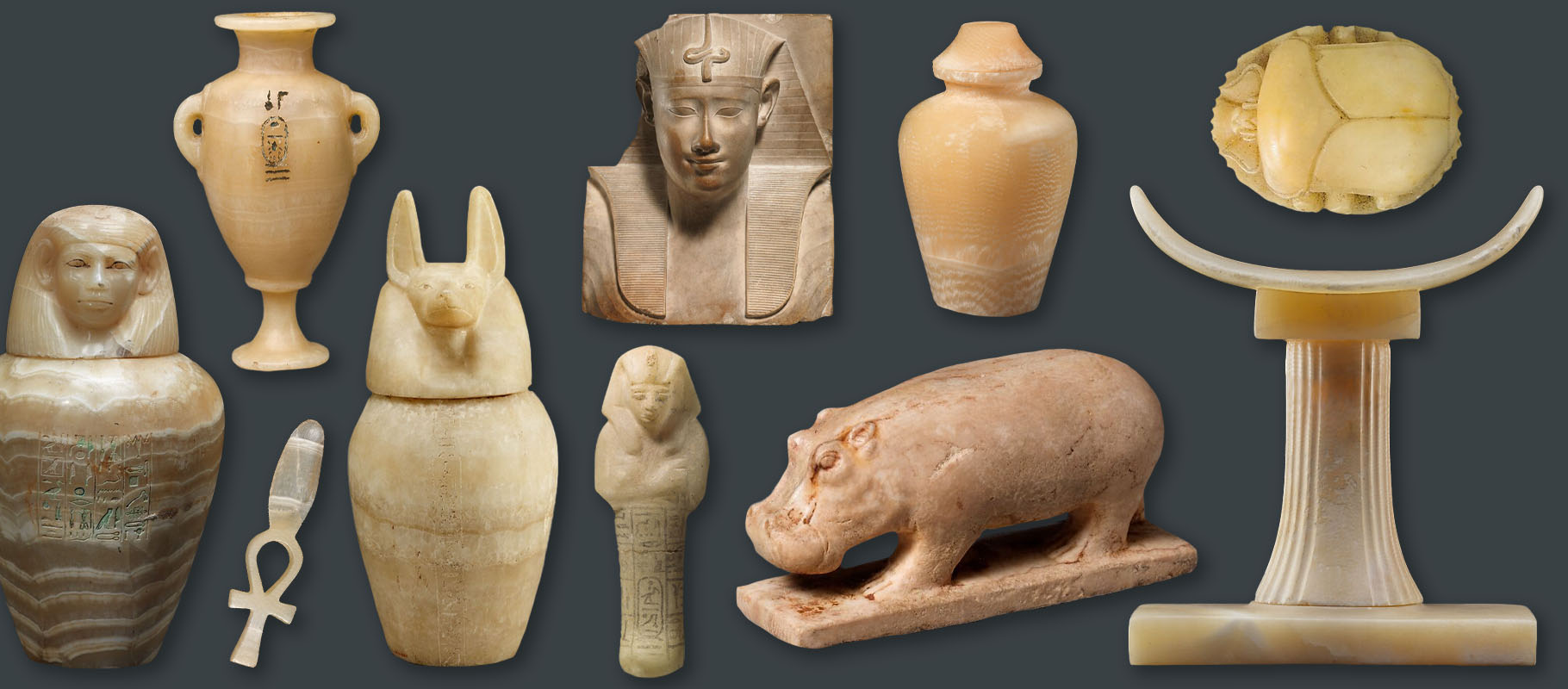 Above: a selection of alabaster antiques from Egypt, including canopic jars, sculptural art and a headrest
Above: a selection of alabaster antiques from Egypt, including canopic jars, sculptural art and a headrest Above: a detail from an Assyrian alabaster relief panel, 883-859 BC
Above: a detail from an Assyrian alabaster relief panel, 883-859 BC Above: examples of 15th century alabaster statuary, including two pieces produced in Nottingham (left, right) and France (centre)
Above: examples of 15th century alabaster statuary, including two pieces produced in Nottingham (left, right) and France (centre)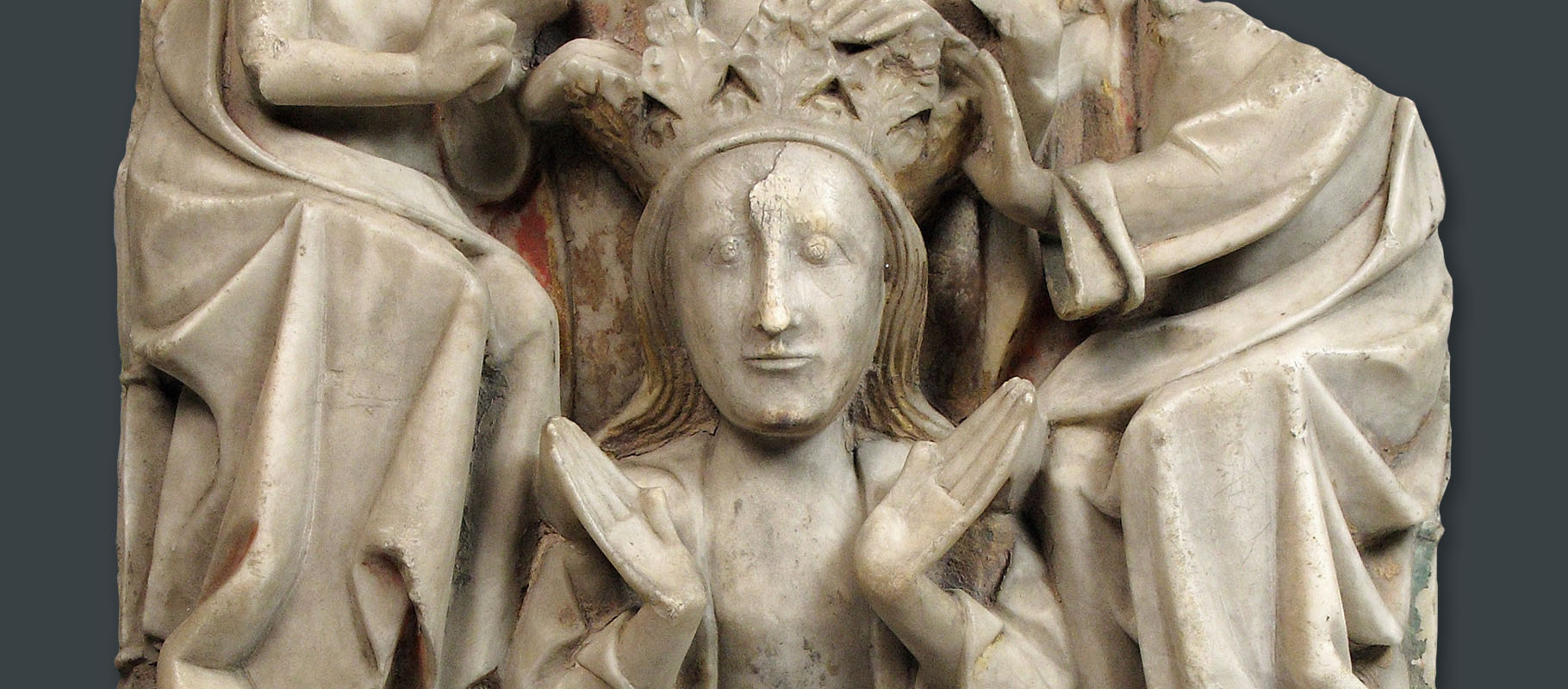 Above: a detail from an alabaster relief that was crafted in Nottingham, 1460
Above: a detail from an alabaster relief that was crafted in Nottingham, 1460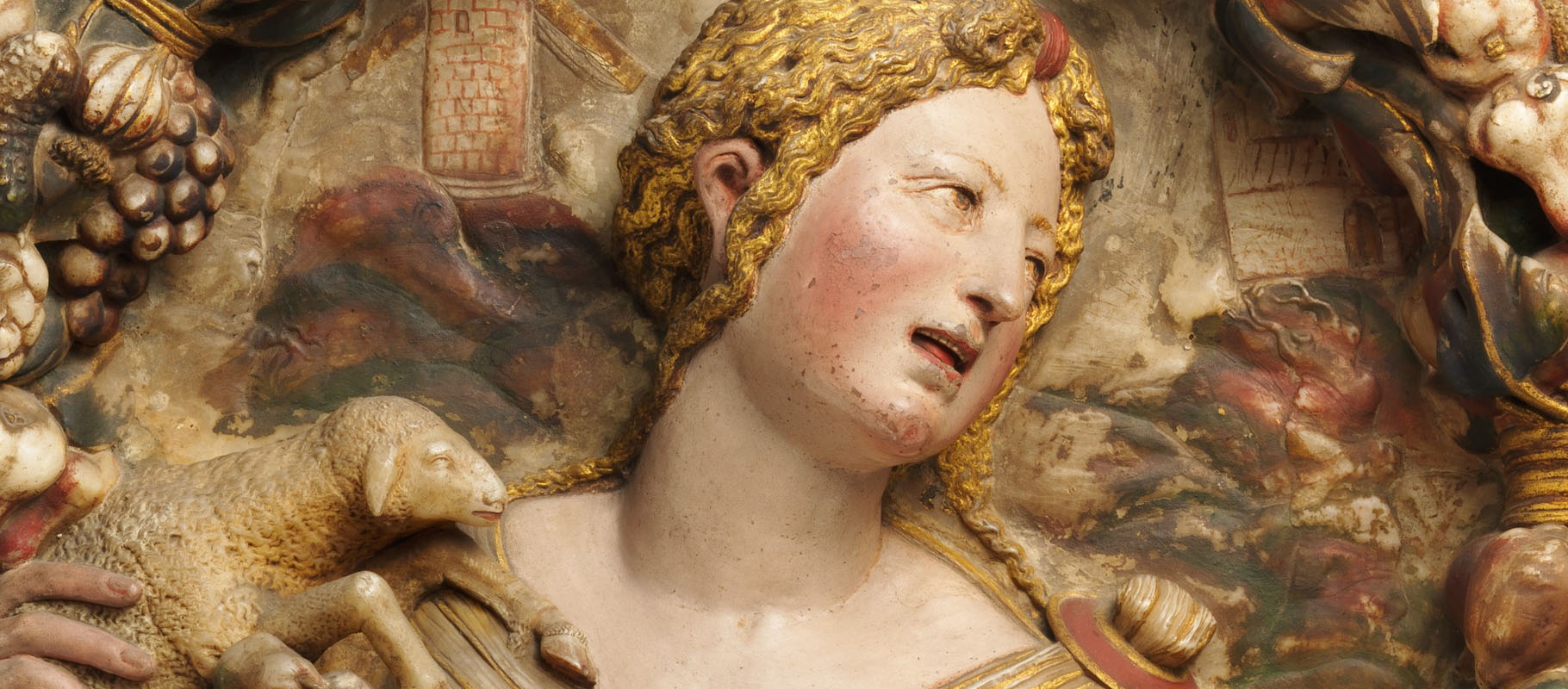 Above: a detail from a mid 16th century sculptural relief of Saint Agnes with a painted surface
Above: a detail from a mid 16th century sculptural relief of Saint Agnes with a painted surface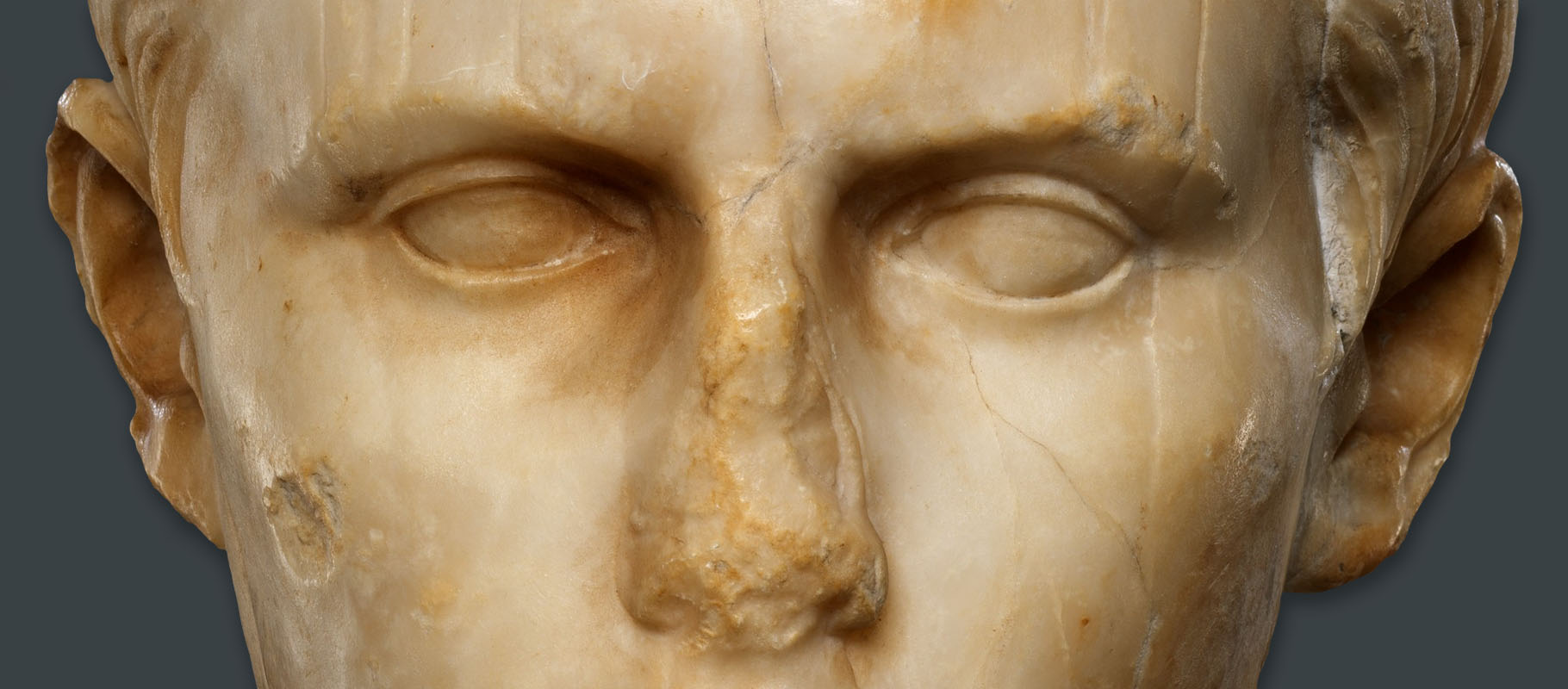 Above: detail of an alabaster Roman emperor
Above: detail of an alabaster Roman emperor 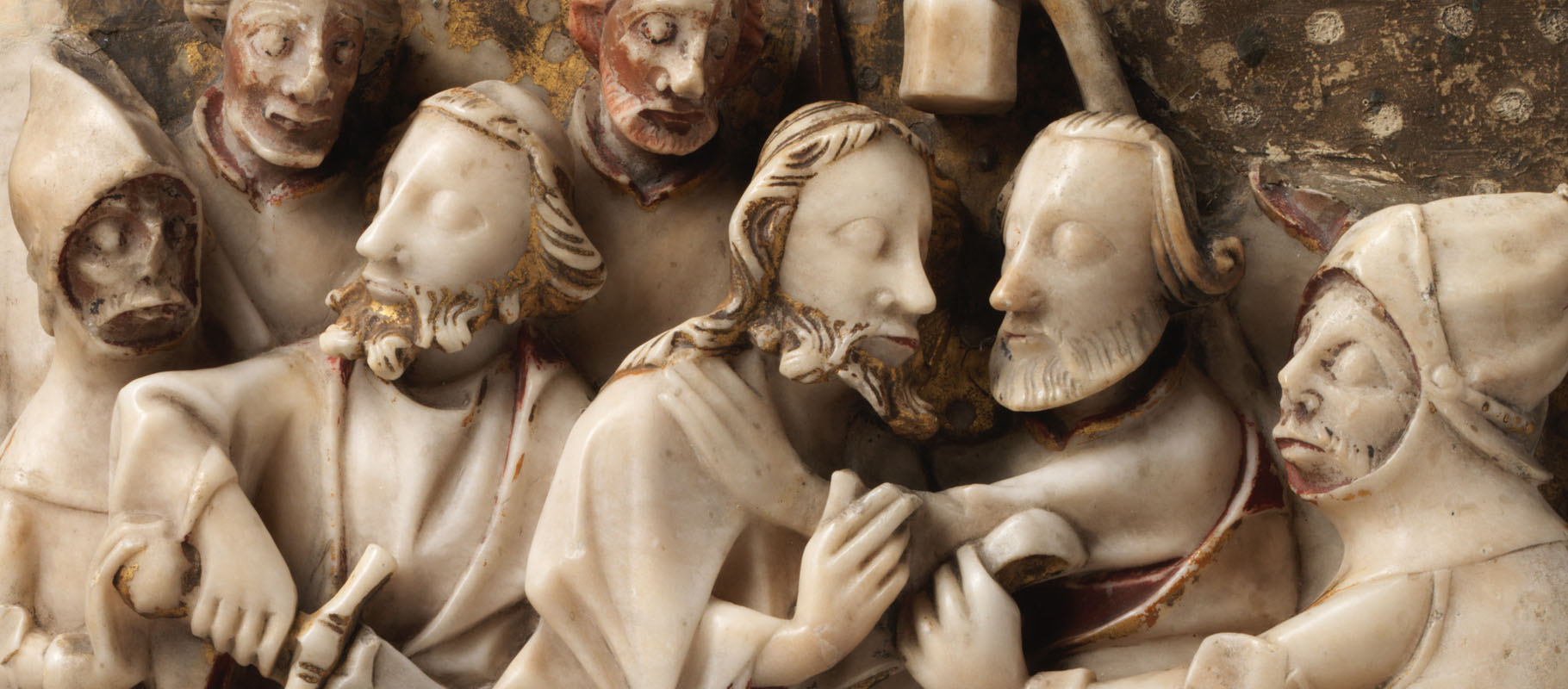 Above: detail from a Nottingham alabaster relief with loss of paint and detail
Above: detail from a Nottingham alabaster relief with loss of paint and detail




